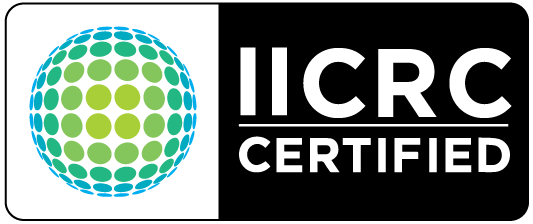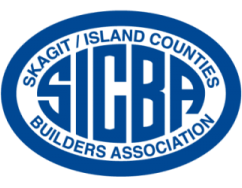Mold Removal FAQs
Here are answers to some common questions about Mold Removal
Mold Removal FAQs
Here are answers to some common questions about Mold Removal
-
Can I Remove Mold Myself?
If mold is limited to a very small area—such as a patch on tile, grout, or a small section of wall—you can usually attempt to clean it yourself using household cleaning products. However, it’s important to protect yourself while doing so. Always wear gloves and a mask to avoid direct contact with mold spores, which can irritate your skin, lungs, and overall health. Proper ventilation, such as opening windows or running a fan, is also recommended during the cleaning process.
If mold growth covers a larger area, however, you should not attempt to remove it on your own. Widespread mold can spread spores into the air, contaminate hidden spaces, and cause significant health risks if disturbed. Large infestations require professional remediation, where trained experts use specialized equipment and techniques to safely contain, remove, and prevent the mold from returning.
-
What Is the Most Effective Way to Remove Mold?
If the moldy area is small enough that it is safe to handle on your own (see “Can I Remove Mold Myself”), one product we recommend is Fiberlock Shockwave, a professional-grade mold-killing detergent. This is a very strong chemical designed for serious cleanup, so it should always be used with the utmost caution. Be sure to wear gloves and a mask, and make sure the area is well-ventilated while you’re working.
For very small patches of mold—such as those on bathroom tile, grout, or other non-porous surfaces—a regular household cleaner may be sufficient. The key is to clean the area thoroughly, ensure it dries completely, and continue to monitor the spot in the days and weeks afterward to confirm that the mold does not return.
-
What Are Signs of Mold Sickness?
Signs of mold-related illness often mimic common allergy or cold symptoms, which can make them easy to overlook at first. Typical reactions may include nasal congestion, sneezing, itchy or watery eyes, persistent coughing, headaches, or even dizziness and fatigue. These symptoms may worsen when you spend time in the affected environment and improve when you leave, which is a key indicator that mold could be the cause.
For individuals with preexisting health conditions, mold exposure can trigger more serious complications. People with asthma, compromised immune systems, or respiratory illnesses may experience severe asthma attacks, difficulty breathing, or other significant health reactions. Because mold can affect everyone differently, it’s important to take any unexplained or persistent symptoms seriously and seek both medical attention and professional mold remediation if you suspect exposure.
-
Can You Kill and Remove Mold From a House Permanently?
You can absolutely remove visible mold from your property, and in many cases, the most effective method is to physically remove and replace the material it was growing on. For example, if mold has penetrated drywall, carpet, or ceiling tiles, those items often need to be cut out and replaced to ensure the mold does not return. On non-porous surfaces, thorough cleaning with appropriate products may be enough.
It’s important to remember, however, that mold spores themselves are a natural part of our environment. They are always present in the air—both indoors and outdoors—just like dust, pollen, and bacteria. While you can minimize active mold growth by removing visible colonies and keeping your home dry, you cannot completely eliminate mold spores from your environment.
Air purifiers equipped with HEPA filters can help reduce the concentration of airborne mold spores, making the air cleaner and easier to breathe, especially for those with allergies or sensitivities. That said, no purifier can completely remove all spores, which is why ongoing prevention—controlling moisture and addressing water damage quickly—is the most effective long-term strategy.
-
How Long Does It Take To Get Sick From Mold Exposure?
Mold exposure does not affect everyone the same way. The severity and speed of symptoms can vary greatly depending on a person’s overall health, immune system, and sensitivity to mold. For some individuals, it can take as little as 24 hours of exposure for noticeable illness to develop—ranging from allergy-like reactions to respiratory irritation.
For others, the effects may be far more subtle, appearing as minor symptoms that slowly build up over time. In these cases, mold-related health issues might show up gradually over weeks or even months, often being mistaken for seasonal allergies, stress, or recurring colds. This delayed onset can make mold exposure particularly tricky to identify, since the connection between the environment and the symptoms isn’t always immediately clear.
Because the impact is so individual, it’s important to take any unexplained or persistent symptoms seriously and to investigate whether mold could be a contributing factor.
-
Should You Call a Professional to Remove Mold?
If mold is only visible on a very small area—such as a patch on tile, grout, or a small section of drywall—it is generally safe for you to try cleaning it yourself. Always take precautions by wearing gloves and a mask to protect yourself from direct contact and inhaling spores. Proper ventilation is also important, so open windows or use fans while cleaning to keep fresh air circulating.
However, if the mold covers a large area, the situation changes. Large infestations can release a significant amount of spores into the air, spreading contamination to other parts of your home and posing serious health risks if disturbed. In these cases, it is not safe to attempt cleanup on your own. That’s when you should call a professional mold removal company. Professionals have the specialized equipment, training, and protective gear needed to safely contain and remove widespread mold, while also addressing the underlying cause to prevent it from coming back.
-
What Happens If You Clean Mold Without A Mask?
Attempting to clean mold without the proper personal protective equipment (PPE)—including at minimum a mask and gloves—can put your health at serious risk. Mold releases tiny spores into the air that are easily inhaled or transferred onto your skin during cleaning, and exposure can lead to a wide range of health issues.
Without protection, you could experience skin irritation, rashes, or burning sensations where spores make contact. Breathing in spores often causes respiratory problems such as coughing, wheezing, shortness of breath, or chest tightness. Mold exposure may also irritate your eyes, leaving them red, itchy, or watery. In more severe cases—especially for those with asthma, allergies, or weakened immune systems—it can even trigger severe allergic reactions or asthma attacks that require medical attention.
Wearing proper PPE is not optional; it is the most important safeguard against the hidden dangers of mold cleanup.
-
What Do Professionals Use To Clean Mold?
Professional mold removal specialists rely on advanced equipment and techniques that go far beyond what the average homeowner has access to. Some of the most common tools they use include air movers, air scrubbers, and commercial-grade cleaning agents designed specifically for mold remediation.
Air movers are industrial-strength fans that create high-velocity airflow. By keeping air circulating and preventing stagnant, humid conditions, they make the environment far less favorable for mold growth and help speed up the drying process in affected areas.
Air scrubbers are heavy-duty filtration systems that capture and remove mold spores, bacteria, and other organic particles from the air. By cycling contaminated air through multiple filters, including HEPA filters, these machines effectively reduce airborne mold spores and help prevent them from spreading throughout the home.
Along with this equipment, professionals use specialized detergents and antimicrobial solutions that are far more effective than standard household cleaners. These chemicals not only kill active mold colonies but also inhibit future growth when applied correctly.
It’s important to note that this type of equipment is not typically available to the public—and even if it were, it requires professional training to use safely and effectively. Attempting to operate these machines without expertise could cause cross-contamination, property damage, or health risks. For this reason, mold remediation is best left to certified professionals.
-
Why Does Mold Keep Coming Back After Cleaning?
Describe the item or answer the question so that site visitors who are interested get more information. You can emphasize this text with bullets, italics or bold, and add links. -
Can Mold Grow Inside Air Ducts Or HVAC Systems?
Yes, mold can thrive in damp ducts and filters where condensation collects. Regular HVAC maintenance and air filter replacement help prevent spores from circulating through your home.
-
What Causes Mold To Grow On Walls And Ceilings?
Describe the item or answer the question so that site visitors who are interested get more information. You can emphasize this text with bullets, italics or bold, and add links. -
Does Mold Always Have A Smell?
Not always—some mold species release strong musty odors, while others grow unnoticed behind walls or under flooring without any scent. Visual inspection is the best way to confirm growth.
-
How Can I Reduce Indoor Moisture To Prevent Mold?
Use dehumidifiers, repair leaks quickly, improve ventilation in bathrooms and kitchens, and ensure your attic and crawlspace stay dry to limit mold-friendly conditions.


